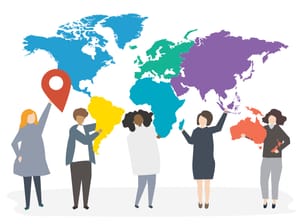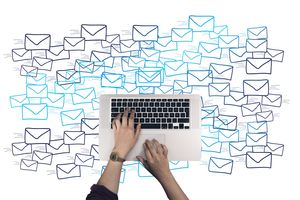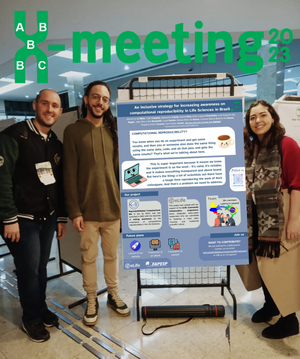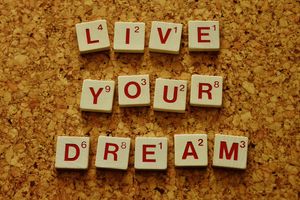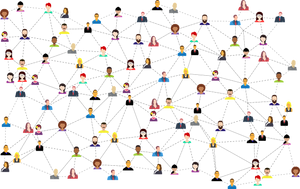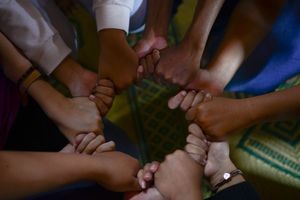A hard-of-hearing (hoh) or deaf person is someone who is unable to perceive sound, i.e. with impaired auditory sense. A hoh person typically has mild to severe hearing loss, while a deaf individual has profound hearing loss. The majority of hoh/deaf individuals have experienced misunderstanding and exclusionary behavior to some extent from people in their direct environment. Inevitably, they undergo a lot of hardship and up-and-down moments. Being diagnosed with profound hearing loss on both ears at age of three, my life is no different from other hoh/deaf individuals around the globe. As a deaf early career scientist, I think the scientific community needs to become much more inclusive to scientists like me, and should provide equal opportunities of high-quality STEM education to hoh/deaf kids. Here, I will focus on the issues and challenges that my people face, and discuss how these partly stem from the stereotypes that exist against us in the dominant hearing world.
The biggest barrier for hard-of-hearing/deaf people to succeed in science stems from the stereotypes, misconceptions, and unconscious biases that exist against us in the dominant hearing world.
The hoh/deaf community is not a small group. In fact, there are more hoh/deaf people in the world than the total number of people living in the United States (331 million people). Find that hard to believe? Let’s look at the statistics. According to the World Health Organization, approximately five percent of the world’s population (466 million people), have hearing loss to a certain extent. 34 million of these are children, who most often lose their hearing ability through congenital causes. Apart from inborn causes, hearing loss and deafness can be acquired at any age, and can be caused by chronic ear infections, specific infectious diseases, or occupational-associated exposure to excessive noise, as well as aging. Overall, one in five Americans older than twelve suffers from hearing loss. This is something to keep in mind when you go about your day: the person next to you in line for coffee, your fellow students, teachers, etc can be hoh/deaf. It’s time to pay attention to the hoh/deaf population and be aware of our needs. We’re everywhere and you should know about us!
What sort of challenges would a hoh or deaf scientist run into?
The malfunctioning of our auditory sense presents a lot of challenges to learn the language of science, especially for those born deaf. Why is this? According to the multisensory psychology of perception, each of our five senses (i.e. sight, hearing, touch, taste, and smell) work closely together to provide a comprehensive view of perception to navigate your surroundings. This process is particularly important for children when they are learning how to speak. Hearing loss deprives us of the beneficial synergistic outcomes of multisensory learning, and makes it incredibly challenging for us to learn speech for learning and communication. Because of this, we are usually only taught one language growing up: speak our local verbal language, or do sign language (SL). Since most of science is communicated in English, this creates an extra barrier for international hoh/deaf scientists that greatly decreases their accessibility to STEM education.
The next challenge we face is our inaccessibility to obtain scientific knowledge via incidental learning. In contrast to formal learning in a classroom setting, incidental learning is a lifelong, academic phenomenon that takes place during unplanned, impromptu interactions with your surroundings. These interactions facilitate literacy development and learning scientific “common senses”. For example, certain conference organizing committees fail to provide accessible accommodations, such as real-time captioning and sign language interpreters for interactive workshops and/or discussion sessions with expert panels. Under such circumstances, it is very difficult for me to follow the ongoing conversations and provide timely comments like other hearing participants. I tend to refrain from attending these sessions when appropriate accommodations are unavailable, and miss out on the opportunity for incidental learning through the discussions. In addition, this makes me miss out on many networking opportunities as well. Therefore, inaccessibility to incidental learning opportunities causes inequity of our STEM learning and career opportunities.
In my opinion, the biggest barrier for hoh/deaf people to succeed in science stems from the stereotypes, misconceptions, and unconscious biases that exist against us in the dominant hearing world. Though they may be invisible and shapeless, these biases create an unwelcoming working environment that inhibits hoh/deaf science trainees from achieving their full potential, and can cause traumatic experiences.
The emergence of deaf professionals clearly showcases that hoh/deaf people do not have a lesser intellect, and emphasizes that the inaccessibility to STEM education is to blame for the underrepresentation of hoh/deaf scientists around the world.
The most prevalent stereotype is that the intellectuality of hoh/deaf people is underestimated. This stereotype, which persists in most countries, is mostly due to the preconception of us being bad learners. This preconception stems from the social awkwardness of being deaf, which creates a biased first impression on hearing people, but is mostly caused by our inaccessibility to education. Unfortunately, this old-fashioned view limits our opportunities to receive proper, accessible STEM education and training. The importance of destigmatizing this stereotype is reflected by the recent spike in the number of deaf lawyers, physicians, professors, NASA engineers, and deaf professionals in the USA. This rise in the number of hoh/deaf people to obtain higher education in America can almost entirely be credited to the successful implementation of the Americans with Disability Act in 1990, which guarantees that people with disabilities are provided with equal opportunities compared to others. For deaf people, this act has led to the implementation of accessible accommodations such as live captioning or sign language interpreters in schools and in the workplace. The emergence of deaf professionals clearly showcases that hoh/deaf people do not have a lesser intellect, and emphasizes that the inaccessibility to STEM education is to blame for the underrepresentation of hoh/deaf scientists around the world. They also highlight the significant impact of the existing stereotypes about hearing-impaired people on the career opportunities we are given along our path. Therefore, this stereotype severely limits our potential and capability of being a STEM scientist.
In addition to stereotypes, hearing people also have some strong misconceptions about us. First, they misunderstand that cochlear implantation surgery and hearing aids can entirely correct for hearing loss. They may argue that these practices can stimulate the residual hearing of hoh/deaf individuals to significantly improve their spoken language and learning abilities, resembling the effects of wearing optical glasses on short-sighted people. However, auditory and visual information is received and processed quite distinctly by the body, with the former being mechanosensory and the latter optical in nature. Unfortunately, current technologies are unable to completely correct for hearing loss. As a second misconception, hearing people assume that each deaf/hoh person knows sign language or lip-reading. Actually, every hoh/deaf individual has a unique experience learning sign language and/or local oral languages, so not all of them learn sign language, or know how to read lips. Therefore, it is always best to first attempt to communicate with a hoh/deaf person to understand their preferred communication format, before assuming that you should shout to them.
Personally, I believe mutual understanding between the hoh/deaf community and the hearing world, in conjunction with advancements in technology, will be the pivotal booster to further the inclusion of STEM education to hoh/deaf people. One century ago, Helen A. Keller overcame her barrier of losing sight and hearing senses to become a writer and lecturer and has become a legendary figure in history. She is my role model because her legacy of courage and curiosity toward knowledge will forever inspire us in the present and future. To advance social equity, the hearing world should help build more inclusive STEM education, at least by socially destigmatizing hoh/deaf individuals and fighting the unconscious biases against them. We have some advice for hearing people - develop mutual understanding, stop assuming based on impression, and adopt a respectful attitude to construct a more welcoming STEM training environment to hoh/deaf scientists.
About the author: Lok Ming (Tom) Tam is a toxicologist and a postdoctoral researcher at the University of Rochester, where he investigates mechanisms of aging. He is passionate about advancing public health and societal wellbeing. Connect with Tom on Twitter.
We welcome comments, questions and feedback. Please contact us at ecrlife [dot] editors [at] gmail [dot] com.
Would you like to share your own story, insight or opinion? Pitch us here.
Follow us on Twitter to stay up to speed with our latest blog post releases.


